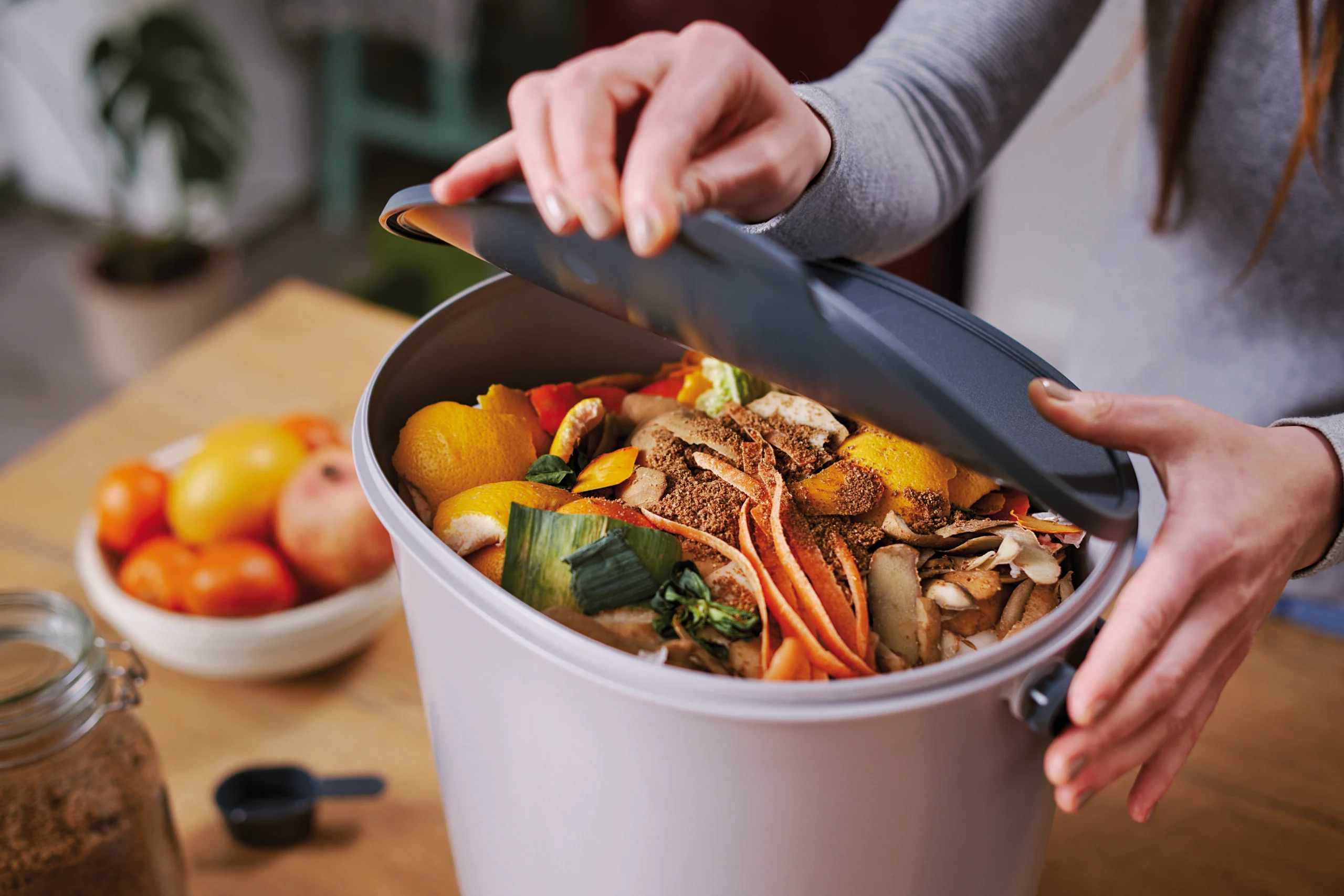Your basket is currently empty!
Bokashi composting is a simple method of separating and composting household organic waste. Every day, we produce tons of waste, much of which is organic kitchen waste. Instead of throwing it away, we can use it to create compost at home all year round. Bokashi composting, or home composting, comes to our rescue.
Organic waste collected over time ends up decomposing and releasing unpleasant odors. However, this can be avoided by using the Bokashi Organko Essential Composter to separate and compost waste with the help of Effective Microorganisms. With this kit, we can carry out domestic recycling of food waste and produce valuable compost to fertilize the garden or create fertilizer for indoor plants. The compost generated in this way does not emit unpleasant odors because, inside the bucket, fermentation occurs and not decomposition.
If we don't need the compost, we can dispose of the contents of the bucket in the organic waste container. The Bokashi Organko Essential Composter consists of two 16-liter containers for separating waste and composting, as well as a starter kit of Effective Microorganisms in powder form. EM Bokashi Compost Starter to start the fermentation process. In the containers, we can place: organic kitchen waste, such as food, fruit, vegetables, coffee, tea, flowers, tissues, napkins, citrus fruits, banana peels, eggshells or small garden waste. As with the selective separation of waste for the organic fraction, we should avoid placing: liquids, milk and dairy products, vinegar, juices, bones, ash, cigarette butts and paper.
How to Prepare the Compost:

- Prepare your compost bucket by spreading a small amount of EM Bokashi Compost Starter on the bottom.
- Chop up organic waste, such as peelings, wilted vegetables and fruits (not moldy ones, as mold can contaminate the compost), and place them in the bucket.
- Spread a small amount of EM Bokashi Compost Starter over the waste at the bottom of the bucket.
- Press the waste into the bucket to remove as much air as possible from between the waste using the included tool.
- Close the bucket lid tightly to ensure an anaerobic environment.
- Repeat the process of adding waste until the bucket is full.
- Every 2-3 days, collect the liquid that separates from the forming compost.
- Leave the filled bucket for at least 2 weeks in a warm place to aid the composting process.
- The compost is ready to use when, upon opening, it smells like a sweet and sour fermentation, and we notice a decrease in the volume of compostable waste.
- A layer of white mold may appear on the surface of the compost, which is desirable and indicates that the fermentation process is occurring correctly.
Bokashi Liquid Collection:
During fermentation, liquid accumulates in the container and should be drained every 2-3 days using the bucket’s tap. From each fermentation cycle, depending on the size of the bucket, you can get 10 to 60 small cups of Bokashi liquid. Dilute this liquid with water (1:50) and use it to water indoor plants or the garden (approximately 1 cup for a large watering can). You can also use the excess liquid as a natural drain unclogger—just pour it down the sink or toilet.
Burying Fermented Waste:
After fermentation, bury the waste directly in the soil or add it to a traditional composter. When buried, the Bokashi waste will decompose within a few weeks, enriching the soil with nutrients and improving its structure. However, keep in mind that Bokashi compost initially has a very acidic pH, so do not use it immediately to fertilize your plants. Also, make sure that the hole where you bury the compost is at least 25 cm away from the garden plants. The compost-enriched soil will be ready to use for planting after about 2-3 weeks, when its pH has stabilized.
Environmental Benefits of Bokashi Composting
In addition to being an effective solution for composting household waste, Bokashi composting offers several environmental benefits. By reducing the amount of organic waste sent to landfills, you help reduce the production of methane, a greenhouse gas that is much more potent than carbon dioxide. Bokashi composting contributes to a cleaner environment while improving the quality of your soil, making it healthier and more fertile for your plants.
Additionally, the fermentation process used in Bokashi composting is highly efficient, allowing waste to decompose without releasing harmful gases or unpleasant odors. This is a major advantage over the traditional composting process, which can emit odors and attract pests if not properly maintained.
Bokashi in the Context of a Sustainable Lifestyle
Composting at home using the Bokashi method is also aligned with a more sustainable lifestyle. By adopting this practice, you are contributing to the concept of a circular economy, where the waste from one activity (in this case, food waste) becomes a resource for another (fertilizer for the garden). This closes the production and consumption cycle in a more harmonious way, reducing the need for chemicals and synthetic fertilizers, which are harmful to both the environment and human health.
Plus, anyone can compost Bokashi, regardless of the amount of space available. If you live in a small apartment or have limited outdoor space, Bokashi composting offers a practical and efficient solution because you can do it indoors without creating odors. This makes it a great option for those who want to start composting but don’t have the space for a traditional compost bin.
Improving Bokashi Composting Efficiency
While Bokashi composting is a simple process, there are a few tips that can help increase your efficiency and ensure you end up with high-quality compost:
- Selection of Organic Waste: Make sure to only use organic waste that is suitable for the Bokashi method. Avoid adding materials such as meat, bones, dairy, and animal products, as these can attract pests and hinder the fermentation process. When composting fruit and vegetable waste, try to cut it into smaller pieces to make it easier to decompose.
- Ambient Temperature: Bokashi composting works best in mild temperatures, between 20°C and 30°C. Avoid placing the bin in very cold areas or in direct sunlight, as this can affect the activity of the microorganisms.
- Maintaining Oxygen Balance: Since Bokashi composting is an anaerobic (oxygen-free) process, it is crucial to remove as much air from the bin as possible. Use the tamping tool to ensure that the waste is tightly packed, with no air pockets, allowing fermentation to occur effectively.
Final Considerations on Bokashi Composting
Bokashi composting is a simple and quick process for producing nutrient-rich compost without unpleasant odors, allowing you to reduce organic waste in your home. It is also a great way to contribute to a healthier environment while producing high-quality compost for your garden or indoor plants. By following the tips mentioned and using the Organko kit, you will be promoting recycling in your home in an easy and effective way.
Composting with Bokashi is an excellent choice for those looking to adopt more sustainable practices and contribute to the environment, while enjoying the convenience and practicality of home composting. Try starting your own Bokashi composting process and see the benefits for your home and garden!

